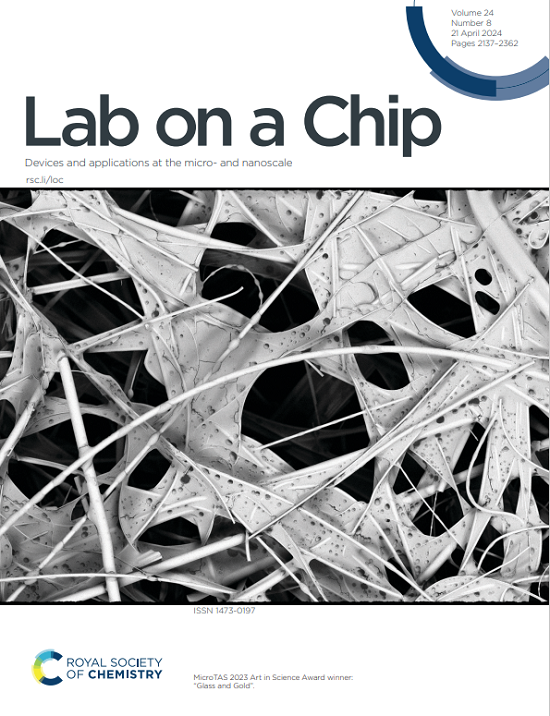Bioselective agglutination induced nanoscale deterministic lateral displacement.
IF 6.1
2区 工程技术
Q1 BIOCHEMICAL RESEARCH METHODS
引用次数: 0
Abstract
Nanoscale deterministic lateral displacement (nanoDLD) is a microfluidic-based size separation technique allowing separation of subcellular biological particles such as double-stranded DNA and extracellular vesicles. Although there has been extensive study of the separation mechanism, across several applications, a systematic study of migration angle shift due to aggregation has not been done. A bead-based immunoassay is developed to aggregate and separate in the presence of a target protein. The results show that the system effectively separates particles, shows bioselectivity, and allows for the detection of target proteins. We demonstrate the agglutination model can be used to explain the migration angle of the aggregation process as a function of antibody and antigen concentrations.生物选择性凝集诱导纳米级确定性横向位移。
纳米尺度确定性横向位移(nanoDLD)是一种基于微流体的尺寸分离技术,允许分离亚细胞生物颗粒,如双链DNA和细胞外囊泡。虽然对分离机理已经有了广泛的研究,但在多个应用中,对聚集引起的迁移角偏移还没有进行系统的研究。开发了一种基于珠的免疫测定法,用于在靶蛋白存在的情况下聚集和分离。结果表明,该系统有效地分离颗粒,表现出生物选择性,并允许检测目标蛋白。我们证明了凝集模型可以用来解释聚集过程的迁移角作为抗体和抗原浓度的函数。
本文章由计算机程序翻译,如有差异,请以英文原文为准。
求助全文
约1分钟内获得全文
求助全文
来源期刊

Lab on a Chip
工程技术-化学综合
CiteScore
11.10
自引率
8.20%
发文量
434
审稿时长
2.6 months
期刊介绍:
Lab on a Chip is the premiere journal that publishes cutting-edge research in the field of miniaturization. By their very nature, microfluidic/nanofluidic/miniaturized systems are at the intersection of disciplines, spanning fundamental research to high-end application, which is reflected by the broad readership of the journal. Lab on a Chip publishes two types of papers on original research: full-length research papers and communications. Papers should demonstrate innovations, which can come from technical advancements or applications addressing pressing needs in globally important areas. The journal also publishes Comments, Reviews, and Perspectives.
 求助内容:
求助内容: 应助结果提醒方式:
应助结果提醒方式:


